| 1 | Saw-scaled viper |
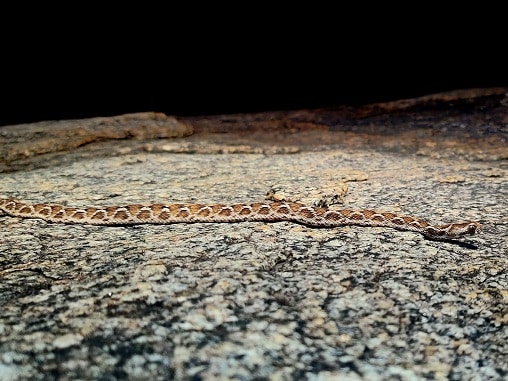
The saw-scaled viper (Echis carinatus) is a resident of dry landscapes in India, which kills dozens of people per year. They’re found in semi-arid deserts with little rainfall, drier rural areas, and rocky plains. They’re a rare species to use sidewinding locomotion, to glide effortlessly over soft sands, and another arid adaption they possess is eating scorpions.
Arthropods make up 65% of their diet, which is far higher than relatives such as the painted saw-scaled viper, which mainly eats vertebrates. According to a 2009 study, their venom is also specifically tailored toward scorpions, with a far higher LD50 score, the quantity required to kill 50% of prey injected. The painted saw-scaled viper (found in Egypt) was significantly weaker.
Scorpions are formidable opponents, and saw-scaled vipers are very cautious about biting them. Their strategy is to deliver one sudden bite and immediately let go, standing back safely, and never holding on like a python. Then they may deliver a second strike, for a fresh influx of venom, but this can be 40 minutes after the original strike.
| 2 | Aquatic coral snake |
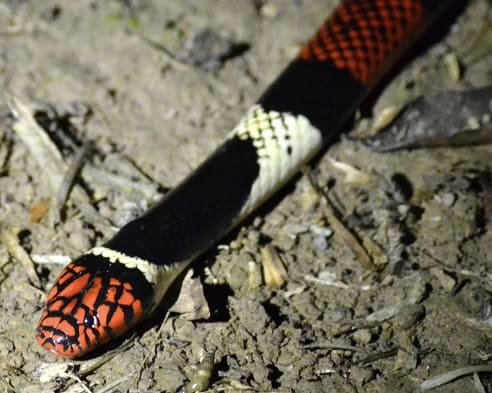
The most water-dwellng of the 50 plus coral snakes of the Americas. Micrurus surinamensis lives in humid waterways of the Amazon rainforest, gliding through rivers, searching for its mainly fish prey. It reaches a maximum of 135cm, with an average of 80-100cm. Due to living in stifling rainforest rivers, which aren’t exactly popular with sunbathers, bites are extremely rare in humans, and aquatic coral snakes contribute virtually nothing to Brazil’s national snakebite statistics.
Micrurus surinamensis eats far more fish than most coral snakes, which rely on fellow snakes. Consequently, a 2001 study found that its venom paralysed fish far more rapidly than other animals, such as snakes and amphisbaenians. This is useful given that fish can rapidly swim away, using their C-start manoeuvre. Fish need to be disabled within seconds if they’re to be swallowed, and that’s what the aquatic coral snake accomplishes. They mostly have neurotoxic venom, causing laboured breathing, paralysis, twitching muscles, slurred speech and potentially death.
One human case involved an 18 year old boy, who was bitten on the finger with a single fang. Within minutes, tingling spread up his arm, and he was soon in the emergency room on an artificial ventilator. If this is the mild, non-specialised scenario, then it must be a nightmare for fish.
| 3 | Lotiev’s viper |

This rare viper is one of the most specialised against insects in the world. Lotiev’s viper lives in extreme southwest Russia, in the rocky Caucasus mountains close to the border with Georgia. For decades, it was known from just 8 locations, until scientists trudged into the mountains and painstakingly found 70 new locations.
They mainly live on high altitude meadows and rocky talus slopes, and according to a 2007 study, testing 6 viper species, their venom was the most specialised against insects of the lot. Specifically, they were tested against field crickets, which their venom killed with ease. After biting, a Lotiev’s viper can immobilise a locust within 6 seconds. It also had the highest proportion of insects in its diet. The likes of adders and Nicholsky’s adders ate no insects whatsoever, and had no specialisation. Orlov’s viper ate some insects, but was less specialised.
Lotiev’s viper is a mysterious species which is still being mapped out. In 2015, it was discovered in Azerbaijan for the first time ever.
| 4 | Gold-ringed catsnake |
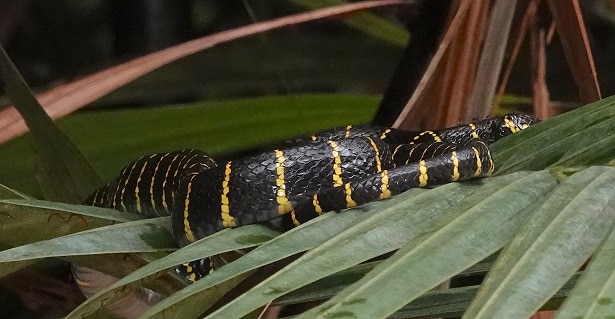
This vivid black and yellow snake lives in swampy forests of eastern Malaysia, Borneo, and Indonesia. It’s a tree dweller which spends much of the day lazily draped over a branch, with no urge to hurt human beings walking past. Gold-ringed catsnakes measure 2.5 metres and particularly favour branches above water, which they dangle over with their tail fastened. Boiga dendrophilia mainly eats birds, and according to a 2006 study, their venom is highly tailored towards them. They possess a three ringer neurotoxin called denmotoxin, found in just a handful of Boiga catsnakes.
Though too weak to affect humans, denmotoxin works similarly to a black mamba’s neurotoxins, binding to acetylcholine receptors which receive brain signals. When injected into mice, the ACh blockade was weak and reversible, but in birds, the blockade was “virtually irreversible”. In birds, the effect on neuromuscular transmission was 100-fold stronger than in mice.
Over millions of years, Boiga dendrophilia’s venom has become ultra-targeted against feathered prey. Other members of its family are similar. The brown tree snake is an invasive species on Guam, and is notorious for decimating the local bird population.
| 5 | Puffing snake |
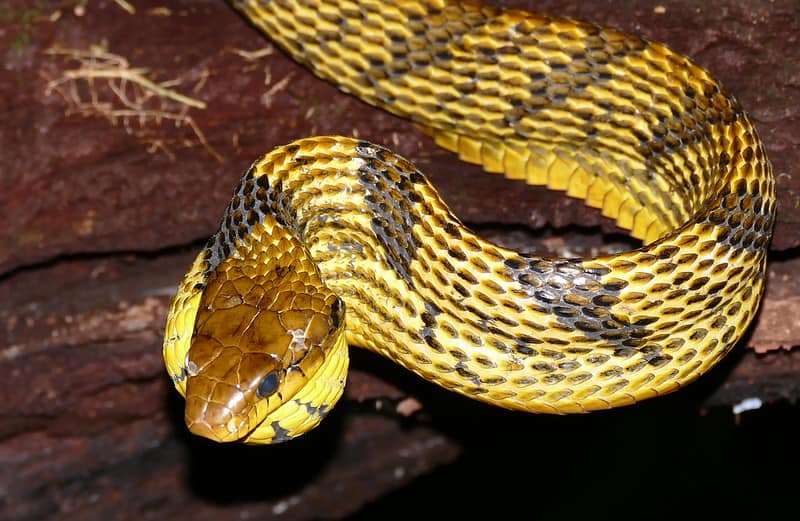
This is a weird example, as it produces two different toxins which target two separate species, but are harmless against the other. Puffing snakes live in central America and reach 2.7 metres. They’re notorious for raiding birds’ nests, and also eat a supply of bats. Puffing snakes never use constriction, and lack a rapidly injected front fang venom. But they have enlarged rear teeth, which produce a moderate venom which they chew in after grabbing their prey manually.
A 2018 study extracted two three-finger neurotoxins, which cause paralysis and laboured breathing. The first was sulditoxin, which was severely deadly against house geckos (Hemidactylus frenatus). When tested against mice, it had no effect, even in quantities 22-fold higher. The second neurotoxin was sulmotoxin 1, which led to rapid immobilisation of mice, but had no effect on geckos. Both of these toxins are unique to the puffing snake family.
This study took place in 2018, and until then, puffing snake venom was barely researched at all. It turns out that they’re a super-evolved snake, with multiple toxins for multiple species. No deaths are known, but who knows – maybe the mixture contains a toxin with our name on it somewhere.
| 6 | Green vine snake |
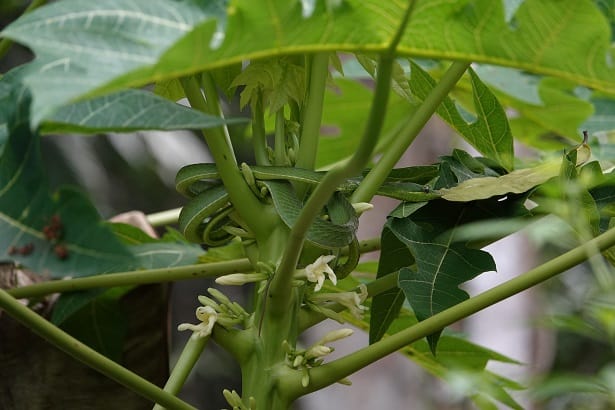
Green vine snakes are a species that perfectly mimics a piece of swinging jungle foliage, aiding and abetting its schemes of ambushing unsuspecting creatures. They range from southern Mexico, through all 7 central American countries, right into the heart of Brazil.
Green vine snakes measure 1.5-2 metres and their prey consists of 53.7% lizards and 46.7% birds. A 2021 study analysed its venom, which is only mild in humans and must be chewed in repeatedly to actually soak in. This venom was extremely simple, consisting of just a few toxins, such as a three finger toxin (3FTx) called fulgimotoxin. In mice and Hemidactylus house geckos, it was only moderately toxic. But in Anolis lizards, which are plentiful in the snake’s central American neighbourhood, the venom’s potency went through the roof.
Several anolis species are already confirmed in the green vine snake’s diet: Orton’s anole, the goldenscale anole. Despite their camouflage, green vine snakes often fail at ambushing their alert prey, but this specialised venom increases their chance of success if they do catch hold.
| 7 | Shield-nosed cobra |
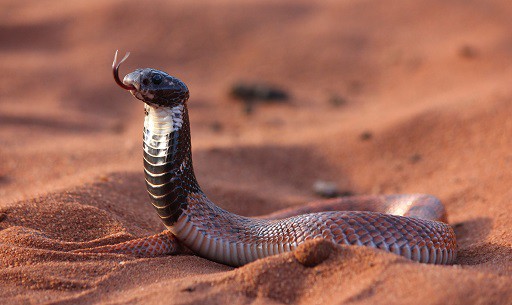
The shield-nosed cobra (Aspidelaps scutatus) is one of Africa’s quieter venomous snakes. Though relatively calm, and not inclined to savagely bite interlopers, their venom is highly neurotoxic and has caused several deaths via lung failure.
Shield-nosed cobras measure 40-60cm, and live in southern Africa, including Zimbabwe, Botswana and South Africa. They stick to the ground, sifting through loose soil, and rarely climbing trees. In 2020, a study analysed several venomous African snakes. Shieldnose cobra crude venom was tested, and found to be far more neurotoxic in lizards. It had a higher specify towards reptile acetylcholine receptors, where brain signals are received, compared to mammal ACh receptors.
Shield-nosed cobras have a varied diet, including small mammals and frogs. But first-hand reports suggest that legless lizards are their absolute favourite. With this targeted venom, they can immobilise skinks or geckos much more rapidly, allowing them to be swallowed whole without resistance. Shield-nosed cobras are recognisable by a single massive scale on their nose with which they shove aside soil like a bulldozer. No antivenom is available for this small yet dangerous snake.
| 8 | Rock rattlesnake |
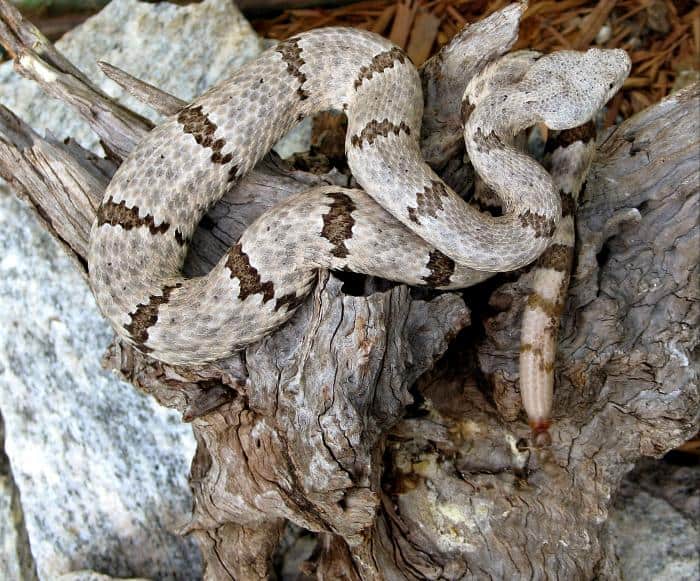
The rock rattlesnake takes the phenomenon a step further, and has venom which varies in specialisation by region. This rattlesnake measures just 60-80cm and lives in Arizona and Texas. It sticks to remote, rocky desert slopes and is relatively mild, with no deaths confirmed in human beings. In small insects, it’s another story entirely.
A 2017 study found that in the Tamaulipan rock rattlesnake subspecies (Crotalus lepidus morulus), its venom was dramatically more potent against house crickets. This version lives exclusively in northern Mexico. In the widespread US subspecies (C. l. lepidus), its venom was far more specialised against mice, and less so against crickets. The mottled rock rattlesnake (C. l. klauberi) is the second US subspecies, and was also stronger against mice, while being the weakest against crickets.
But this version was overwhelmingly the most powerful against reptiles, with an LD50 score of 0.17mg versus 1.16mg in C. l. lepidus, the main US subspecies. The weakest against reptiles was C. l. morulus, the Mexican subspecies, scoring just 6.86mg. Each rocky slope has a different prey makeup, forcing the rock rattlesnake to adapt. In humans, rock rattlesnake venom mainly causes swelling and mild haemorrhaging.
| 9 | Australian black snakes (Pseudechis) |
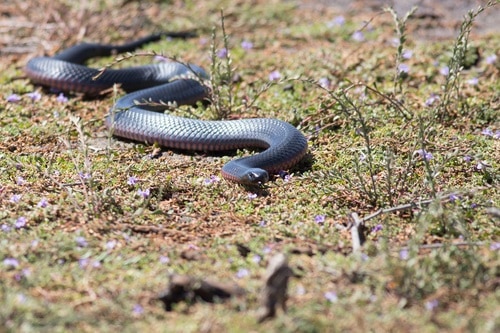
The red-bellied black snake causes over 30% of Australian snake bites. It’s infamous for an extremely painful bite, and a host of symptoms like nausea, vomiting, haemorrhaging and mild necrosis. The one mystery is that while Pseudechis porphyriacus venom contains a neurotoxin called Eα-Elapitoxin-Ppr1, it has no neurotoxic effects in humans, whether it be paralysis, slurred speech or difficulty breathing.
In 2013, scientists extracted this toxin and a very similar neurotoxin (α-Elapitoxin-Pc1) from its relative, Collett’s black snake. They applied them both to avian and rodent nerve-muscle preparations. The verdict was clear: there was a far stronger effect on the bird tissue. The neurotoxins produced far more twitching in the preparation, a commonly used method for testing neurotoxins.
Though Australian black snakes are no joke for mammals, the neurotoxins are one aspect they’re immune to, whether you’re a human being or a walking, talking rat. The scientists conclude that “the avian preparation is more sensitive to the neurotoxic effects of these toxins than the mammalian preparation“. Red-bellied black snakes appear all over eastern Australia, sticking close to water bodies rather than dry, arid countryside.
| 10 | Prairie rattlesnake |
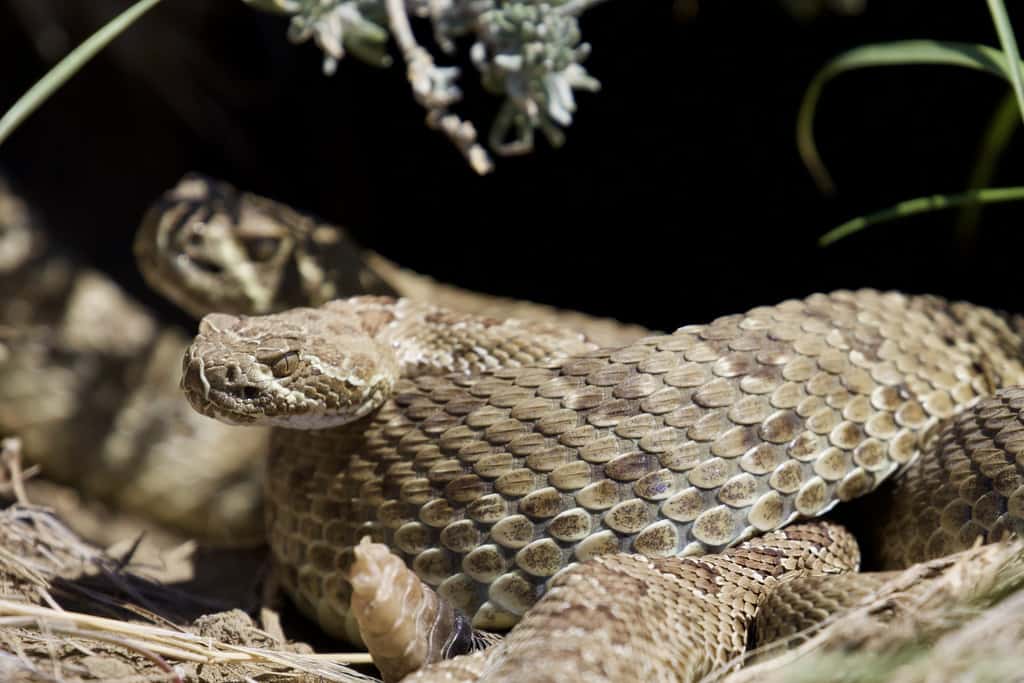
Prairie rattlesnakes occupy a swathe of the US mid-west, beginning in southern Canada, ending in northern Mexico, and occupying many states inbetween. They reside on the Great Plains and in rocky canyons, rarely in forests. Over 90% of their diet consists of mammals, particularly deer mice, squirrels and prairie dogs. Lizards are barely a feature at all, and a 2023 study identified a toxin tailored specifically towards mammals. It was called myotoxin A, and was originally discovered in 1977. This toxin targets muscle tissue, causing structural damage and necrosis of individual fibres. This can cause chaos in humans, while in mammals it’s debilitating, causing total paralysis of limbs.
The 2023 study found that myotoxin A was so specialised that it was virtually harmless in lizards. In fact, this was the first ever mammal-specific toxin identified from a rattlesnake. Venoms as whole had been tested against mammals or lizards, but not individual toxins. As a species, prairie rattlesnakes lack neurotoxins, and are most famous for their muscle tissue destruction, with the usual harmorrhaging and swelling thrown in.
